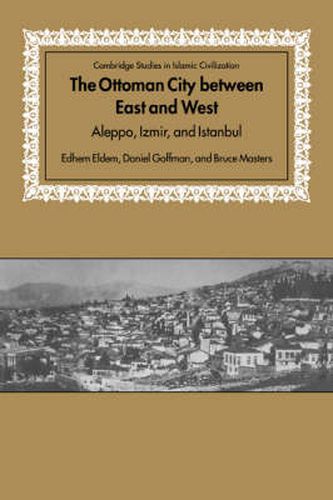Readings Newsletter
Become a Readings Member to make your shopping experience even easier.
Sign in or sign up for free!
You’re not far away from qualifying for FREE standard shipping within Australia
You’ve qualified for FREE standard shipping within Australia
The cart is loading…






Studies of early-modern Islamic cities have stressed the atypical or the idiosyncratic. This bias derives largely from orientalist presumptions that they were in some way substandard or deviant. The first purpose of this volume is to normalize Ottoman cities, to demonstrate how, on the one hand, they resembled cities generally and how, on the other, their specific histories individualized them. The second purpose is to challenge the previous literature and to negotiate an agenda for future study. By considering the narrative histories of Aleppo, Izmir and Istanbul, the book offers a departure from the piecemeal methods of previous studies, emphasizing their importance during the seventeenth and eighteenth centuries, and highlighting their essentially Ottoman character. While the essays provide an overall view, each can be approached separately. Their exploration of the sources and the agendas of those who have conditioned scholarly understanding of these cities will make them essential student reading.
$9.00 standard shipping within Australia
FREE standard shipping within Australia for orders over $100.00
Express & International shipping calculated at checkout
Stock availability can be subject to change without notice. We recommend calling the shop or contacting our online team to check availability of low stock items. Please see our Shopping Online page for more details.
Studies of early-modern Islamic cities have stressed the atypical or the idiosyncratic. This bias derives largely from orientalist presumptions that they were in some way substandard or deviant. The first purpose of this volume is to normalize Ottoman cities, to demonstrate how, on the one hand, they resembled cities generally and how, on the other, their specific histories individualized them. The second purpose is to challenge the previous literature and to negotiate an agenda for future study. By considering the narrative histories of Aleppo, Izmir and Istanbul, the book offers a departure from the piecemeal methods of previous studies, emphasizing their importance during the seventeenth and eighteenth centuries, and highlighting their essentially Ottoman character. While the essays provide an overall view, each can be approached separately. Their exploration of the sources and the agendas of those who have conditioned scholarly understanding of these cities will make them essential student reading.